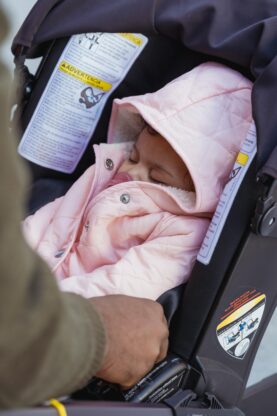Table of Contents
Background Check and References
One of the most important safety procedures that every employer should implement for babysitters is conducting background checks and checking references. This step is crucial in ensuring that the babysitter has a clean criminal record and a good reputation. It is essential to verify the babysitter’s identity and confirm their qualifications and experience with children. Employers should ask for at least two professional references from previous employers or clients to ensure that the babysitter is trustworthy and reliable. By performing thorough background checks and checking references, employers can have peace of mind knowing that they are entrusting their children to a responsible and qualified individual.
On-Demand Childcare in Your Neighborhood
Book a Sitter
Emergency Preparedness
Another critical safety procedure that employers should implement for babysitters is emergency preparedness. Babysitters should be equipped with the knowledge and skills to handle emergencies and respond appropriately in case of accidents or unforeseen events. Employers should provide babysitters with a list of emergency contacts, including the parents’ contact information, the nearest hospital, and emergency services. Babysitters should also be trained in basic first aid and CPR to handle common childhood injuries like cuts, burns, and choking. Employers should ensure that babysitters have access to a first aid kit and emergency supplies at all times. By being prepared for emergencies, babysitters can act swiftly and decisively to ensure the safety and well-being of the children under their care.
Childproofing and Safety Guidelines
Childproofing the environment and implementing safety guidelines are essential safety procedures that every employer should implement for babysitters. Employers should inspect the premises and identify potential hazards that could pose a risk to children’s safety, such as sharp objects, electrical outlets, and toxic substances. Babysitters should be instructed on childproofing measures, such as keeping cleaning supplies out of reach, securing cabinets and drawers, and installing safety gates on stairs. Employers should also provide babysitters with safety guidelines on supervising children during activities like swimming, biking, and cooking to prevent accidents and injuries. By childproofing the environment and implementing safety guidelines, employers can create a safe and secure setting for babysitters and children.

Communication Plan
Effective communication is key to ensuring the safety and well-being of children under the care of babysitters. Employers should establish a communication plan with babysitters to keep them informed about the children’s schedules, routines, preferences, and medical conditions. Babysitters should have access to the parents’ contact information and know how to reach them in case of emergencies or concerns. Employers should also encourage open communication between babysitters and children to build trust and rapport. Babysitters should be encouraged to ask questions, seek guidance, and report any issues or incidents promptly.
By establishing a clear communication plan, employers can facilitate effective communication between babysitters, parents, and children to ensure a seamless and safe childcare experience.
Training and Supervision
The final safety procedure that every employer should implement for babysitters is training and supervision. Employers should provide babysitters with comprehensive training on child care, safety procedures, and emergency protocols before they begin their duties. Babysitters should be educated on child development, age-appropriate activities, positive discipline techniques, and conflict resolution strategies. Employers should also supervise babysitters closely during the initial period to assess their performance, provide feedback, and address any concerns or issues. Employers should conduct regular training sessions, performance evaluations, and ongoing supervision to ensure that babysitters are following safety procedures and providing quality care for the children. By investing in training and supervision, employers can equip babysitters with the necessary skills and knowledge to ensure the safety and well-being of the children under their care.
In conclusion, implementing safety procedures for babysitters is essential for employers to provide a safe and secure environment for children. By conducting background checks, preparing for emergencies, childproofing the environment, establishing a communication plan, and providing training and supervision, employers can ensure that babysitters are equipped to handle the responsibilities of caring for children. Employers should prioritize safety procedures to protect the well-being of children, build trust with parents, and maintain a positive reputation in the childcare industry. By following the top 5 safety procedures outlined in this article, employers can create a safe and nurturing environment for babysitters and children alike.










